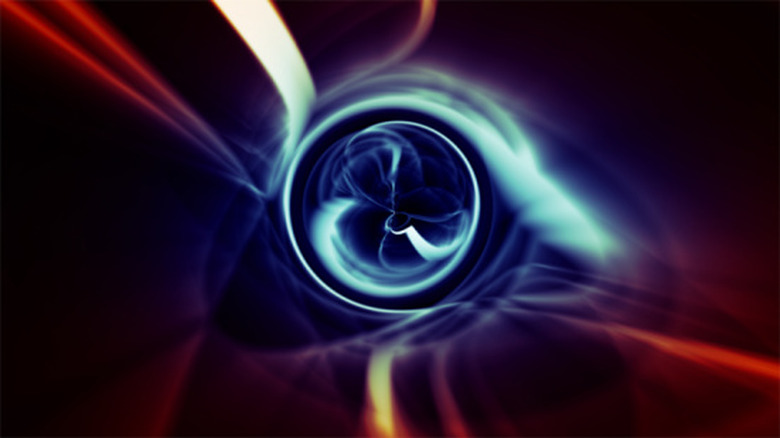Black Hole Experiments For Kids
A black hole is an invisible entity in space with a gravity pull so strong that light cannot escape. Black holes are formerly "ordinary" stars stars that have burned out or been compressed. The pull is strong due to the tiny space into which all the mass of the star has come to occupy. they can vary in size from one atom to the size of more than 4 million of the Earth's own suns.
A black hole science project is a great way for students to both familiarize themselves with a mesmerizing and much-celebrated (if poorly understood) physical phenomenon. As such, it's also a great way for kids to learn how to explain things to their peers; after all, teaching is doing.
Gravitational Pull: Preparation
Gravitational Pull: Preparation
A black hole's gravity is dependent on the mass and distance from the object. Black holes have strong gravitational fields; however, objects must be within hundreds of miles to be affected. The magnetic marble represents a piece of space matter which will orbit the black hole if it gets too close.
- Purchase two foam board sheets or black sign boards (11 inches by 17 inches is a good size), one strong cylindrical magnet, a magnetic marble and a tray or towel.
- Cut four to six holes in the board the same size as the cylindrical magnet.
- Place the magnet in one of the holes and place a piece of tape over the hole to secure it.
- Cover the foam board with the second piece of board so that the surface appears uniform.
- Place the tray or towel underneath the board to contain the marble.
Gravitational Pull: Experiment
Gravitational Pull: Experiment
Roll the marble over the foam board. When it approaches the hidden magnet or black hole, its path will change. The magnet represents the pull of gravity, but note gravity is a much weaker force than magnetic pull, and only becomes discernible with planet-sized or larger objects. Depending on how close the marble comes to the hidden magnet, you will notice different outcomes.
Black Hole Experiment: Preparation
Black Hole Experiment: Preparation
Stars constantly battle the effects of fusion, pressure and gravity. Large amounts of mass enable a star to collapse a body into a point. Gravity will eventually overwhelm the star and the end state of a star's collapse is determined by the original mass of the star.
This physics project on black holes explores the end state for a star. Gather several balloons, three, 12-inch to 14-inch sheets of aluminum foil per balloon, a sharp object, and earplugs or ear muffs.
Black Hole Experiment: Principles
Black Hole Experiment: Principles
- Blow up the balloons and tie off the ends. Cover the balloons with at least two layers of aluminum foil. These balloons represent stars.
- Push on the surface of the covered balloons with your hands. The stars will not collapse because the outward force generated by fusion within the star balances the gravity inward.
- When a real star runs out of core fuel, it may collapse. Put on ear protection and pop the balloons to remove the air pressure inside. Ensure the foil retains its shape. The star has run out of fuel in its core, and fusion no longer generates enough heat and pressure to prevent collapse.
- Collapse the balloon star with your hands. The "gravity pull" represented by your hands collapses the star and creates a black hole.
Detection of Black Holes
Detection of Black Holes
How do scientists even know back holes are there, given that they are invisible? Sure, they are large and exhibit strong gravitational fields, but they are a long way away.
Scientists are able to detect the effects of a black hole's strong gravity on neighboring stars and gases. If a star is orbiting around a specific locus, scientists can examine the kinetic properties of that star to find out if a black hole might be at the center of the orbit.
When a black hole and a star are orbiting close together, high-energy light is produced. Scientific instruments can see this high-energy light.
Cite This Article
MLA
Ritter, Carolyn. "Black Hole Experiments For Kids" sciencing.com, https://www.sciencing.com/black-hole-experiments-kids-8570050/. 17 July 2019.
APA
Ritter, Carolyn. (2019, July 17). Black Hole Experiments For Kids. sciencing.com. Retrieved from https://www.sciencing.com/black-hole-experiments-kids-8570050/
Chicago
Ritter, Carolyn. Black Hole Experiments For Kids last modified August 30, 2022. https://www.sciencing.com/black-hole-experiments-kids-8570050/
